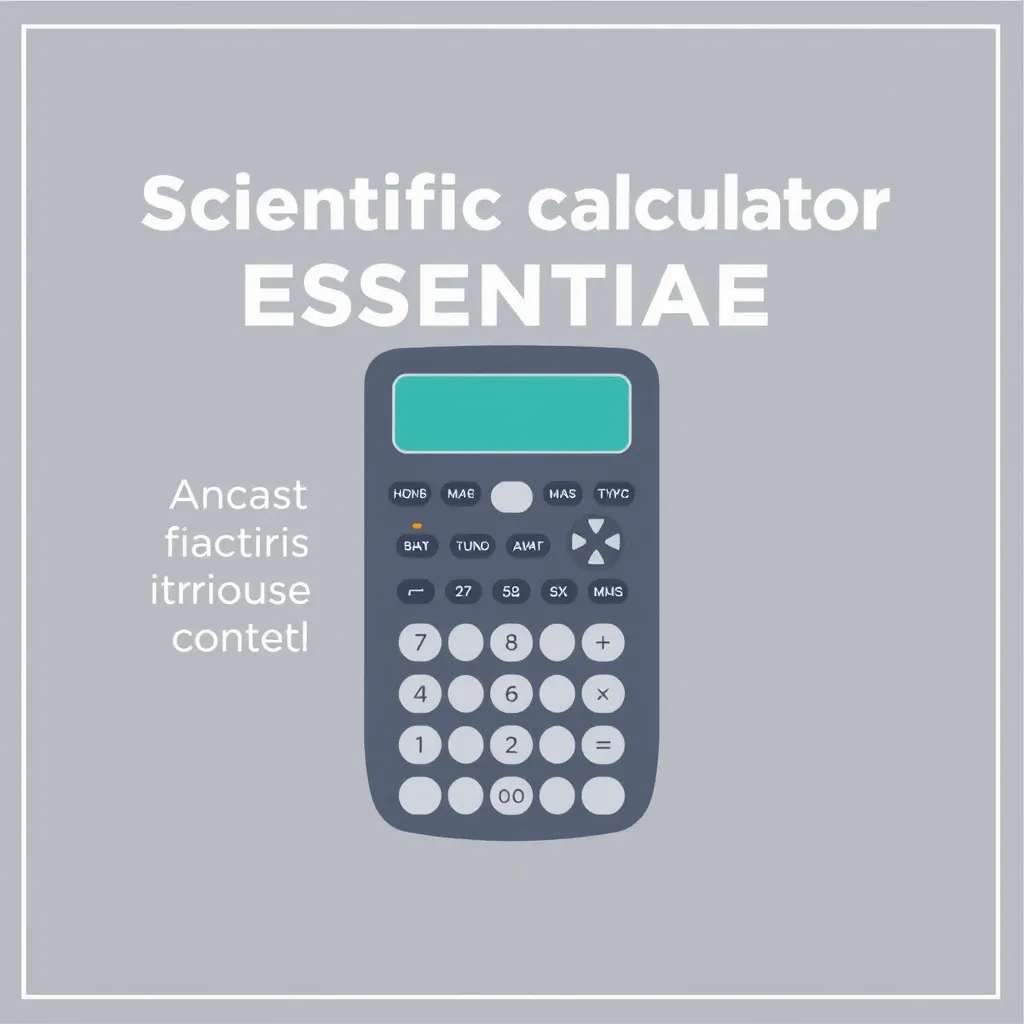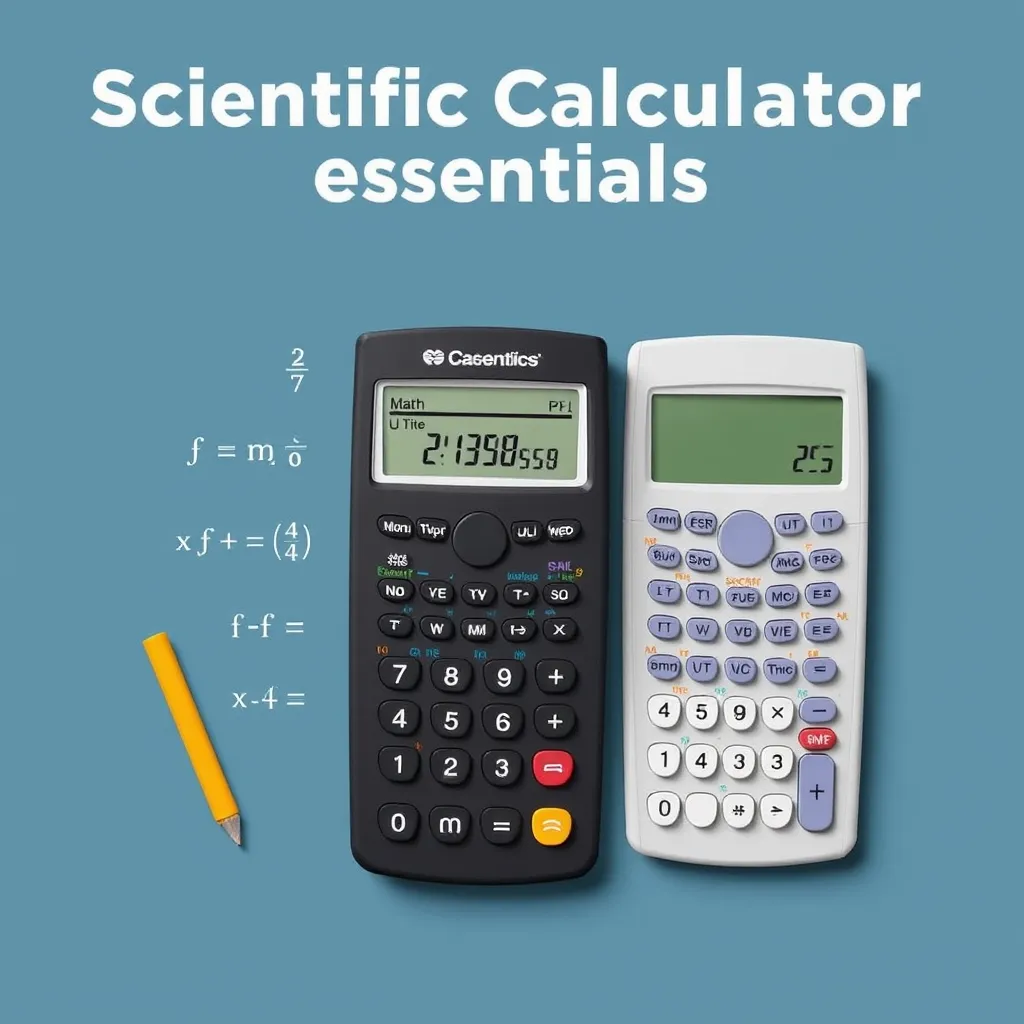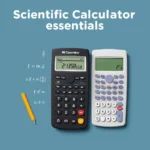Scientific calculator essentials: Unlock complex math with fraction conversion, trigonometry, and logarithms. Master your skills today!
Scientific Calculator
with Fraction Conversion
How to use:
- Perform calculations using numbers and operators
- Use scientific functions (sin, cos, log, etc.)
- Press “=” to see the result
- Press “a/b” to convert decimal to fraction
- AC: Clear All, C: Clear Entry, ⌫: Backspace
Table of Contents
Discover the significance of scientific calculators in performing complex mathematical operations. This guide covers essential features like fraction conversion, trigonometric functions, and logarithmic calculations. Ideal for students and professionals alike, learn best practices for using scientific calculators effectively. Enhance your mathematical skills and problem-solving abilities with this invaluable resource. From understanding basic functions to troubleshooting tips, maximize the potential of your scientific calculator for accurate and efficient calculations across various fields, including engineering and finance.

Introduction to Scientific Calculators
A scientific calculator is a powerful tool designed to assist users in performing a wide range of mathematical operations, especially those that extend beyond basic arithmetic. These calculators are particularly important for students, engineers, and professionals who frequently deal with complex calculations in their academic or work environments. They facilitate the execution of intricate formulas, aiding in problem-solving across various fields, including science, engineering, and finance.
One of the most significant features of a scientific calculator is its ability to handle fractions. The dedicated fraction button enables users to easily convert between mixed numbers, improper fractions, and decimals, making fraction manipulation straightforward. This functionality is essential for students who encounter fractions in their mathematics coursework and for professionals who require precise calculations in areas like statistics and engineering.
In addition to fraction operations, scientific calculators come equipped with various other critical features that enhance their utility. The percentage feature allows users to calculate discounts, taxes, and percentage increases with ease. Furthermore, the ability to compute square roots and perform trigonometric functions, such as sine, cosine, and tangent calculations, significantly broadens the applications of these devices. This versatility makes a scientific calculator an indispensable resource not only in academic settings but also in real-world scenarios where accurate calculations are crucial.
The design of scientific calculators often prioritizes a user-friendly interface, enabling quick access to these functions. With advanced models available on the market, features such as graphing capabilities and programmable functions can also be found. Such advancements cater to individuals looking to explore mathematics at a deeper level. Overall, scientific calculators serve as vital instruments for performing complex calculations, guiding users through both routine equations and elaborate mathematical challenges.
Understanding Fraction Conversion
Fraction conversion is a fundamental capability of scientific calculators that allows users to express decimal numbers in fraction form. This skill is particularly beneficial in various mathematical scenarios, such as simplifying calculations or enhancing clarity in presenting results. A common reason for converting decimals to fractions is to express ratios or relationships between numbers more precisely, especially in fields like engineering, chemistry, and statistics.
For instance, a decimal like 0.75 can be easily converted into a fraction. The conversion process illustrates that 0.75 is equivalent to 3/4. This representation not only provides a clear understanding of the number's value but also aids in further calculations, such as finding common denominators or adding fractions. Moreover, fraction form is essential when dealing with measurements or any calculations that involve parts of a whole, where precision is crucial.
Performing Calculations with Scientific Functions
A scientific calculator is an essential tool that equips users with advanced mathematical capabilities beyond basic arithmetic. Learners and professionals alike benefit from its array of scientific functions, including sine, cosine, tangent, logarithm, and exponentiation. Understanding how to effectively use these functions can enhance one’s ability to solve complex problems and perform calculations within various fields such as engineering, physics, and finance.
To perform calculations with these scientific functions, users should start by familiarizing themselves with their respective keys on the calculator. The sine (sin), cosine (cos), and tangent (tan) functions are foundational in trigonometry, commonly used to relate angles to the lengths of sides in right triangles. For instance, to find the sine of a 30-degree angle, users would enter “30” followed by the “sin” button, yielding a result of 0.5. This ability to convert angles into their sine, cosine, and tangent values is crucial for applications ranging from navigation to architecture.
Logarithmic functions, identified by keys such as “log” for base 10 and “ln” for natural logarithms, are invaluable for calculations involving growth rates and exponential decay. To calculate the log of 100, one would press “100” followed by the “log” key, which would result in 2. This function's practical implications span various domains, including economics and the sciences, where it is used in data analysis and modeling phenomena.
Exponentiation, represented by the “^” or “EXP” button, enables users to raise numbers to a certain power. For example, to compute 2 raised to the power of 3, you would input “2”, then “^”, followed by “3”, yielding a result of 8. Integrating these scientific functions with the fraction conversion feature of a scientific calculator allows for seamless calculations, crucial for accurately solving real-world problems. Mastery of these functionalities empowers users to truly leverage the potential of their scientific calculators, transforming complex mathematical operations into manageable tasks.

Best Practices and Troubleshooting Tips
Utilizing a scientific calculator effectively involves adopting certain best practices and understanding how to troubleshoot common issues that may arise during calculations. First and foremost, regular maintenance of your device is crucial for ensuring its longevity and accuracy. Keep the calculator clean and free from dust and moisture, which can interfere with its functionality. Additionally, replace the batteries promptly to avoid power-related issues that could disrupt calculations.
When entering calculations, accuracy is paramount. Begin by carefully assessing the problem at hand, and familiarize yourself with the specific functions of your calculator. Input one number and function at a time. If the result seems incorrect, double-check your entries. Using clear and concise inputs while avoiding rushed calculations can significantly minimize errors. It's also beneficial to review the calculator's manual for specific operations, features, and capabilities, ensuring that you are utilizing the device to its fullest potential.
In cases where your scientific calculator does not produce expected results, there are several common troubleshooting steps to consider. For example, if the ‘AC’ button, which clears calculations, is mistakenly activated, any ongoing computations might be lost. Similarly, if the ‘C’ button is pressed, only the last entry is cleared, which could lead to confusion. Additionally, the ‘⌫’ button, designed to delete previous inputs, should be used with caution. Misuse of these buttons can often be the source of unexpected outputs.
Should unexpected behavior persist, consider resetting the calculator as indicated in the user manual. This can often resolve temporary glitches. By adhering to these best practices and troubleshooting tips, users can enhance their efficiency and confidence in operating scientific calculators, thereby maximizing their functionality for both academic and professional purposes.

In summary, scientific calculators are indispensable tools for anyone engaged in complex mathematical tasks, whether in academia or professional settings. Their array of features, such as fraction conversion and advanced trigonometric functions, empowers users to tackle challenging problems with confidence. By familiarizing yourself with the best practices outlined in this guide, you can significantly enhance your efficiency and accuracy in calculations. This resource not only helps you master basic functions but also equips you with troubleshooting techniques to overcome any challenges you may face. Take the next step in your mathematical journey by fully leveraging your scientific calculator — unlock its potential and elevate your problem-solving skills today!









